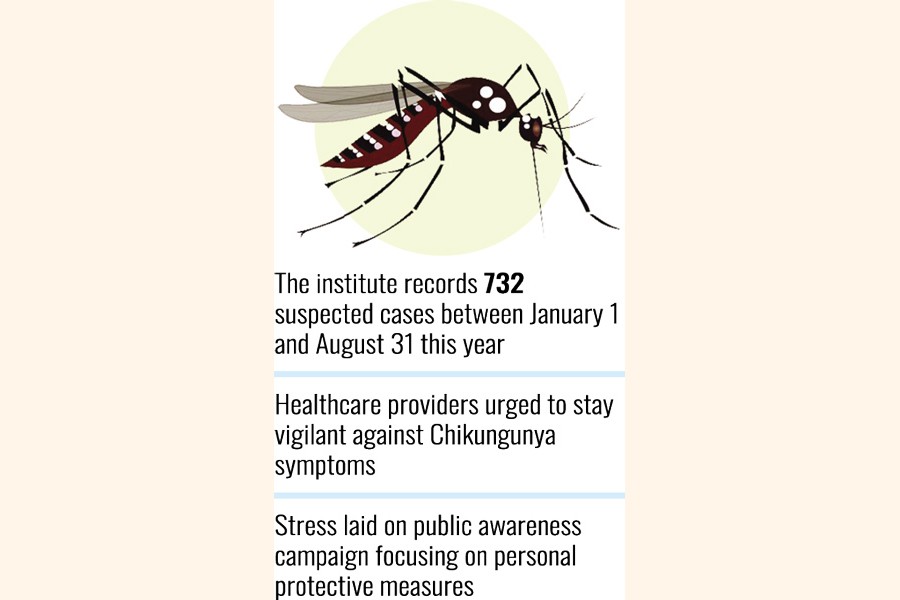
Published :
Updated :

Siddiqur Rahman, a college teacher from the city's Azimpur area had been suffering from high fever and severe fatigue in late August for several days.
Following doctor's advice, he underwent a number of tests and tested Chikungunya positive.
"What began as a mild fever soon turned into excruciating joint pain that left me bedridden for nearly a week," he said.
"I couldn't move my hands or legs without pain. It felt like my bones were breaking," he said. Even after recovery, he still struggles with lingering stiffness and fatigue.
His experience highlights a critical public health concern, especially during the post-monsoon season when mosquito-borne diseases like Chikungunya see a significant surge.
Unlike facilities for diagnosis of dengue, there are limited options for Chikungunya test. The real number of infections is higher than reported, since Bangladesh does not have a strong national surveillance system for Chikungunya. The similarity of symptoms with dengue-such as fever, joint pain, headache, and rash-also makes diagnosis difficult. As a result, many cases go undetected or unreported.
Between January 1 and August 31 this year, the Institute of Epidemiology, Disease Control and Research (IEDCR) recorded 732 suspected cases of Chikungunya in Dhaka.
Among them, 400 cases were confirmed through RT-PCR tests, showing that the virus is actively spreading in both north and south Dhaka.
In a report published recently, the IEDCR said it had observed a resurgence of Chikungunya virus transmission in Dhaka city in 2025.
According to it, the worst-hit areas include Mohakhali, Tejgaon, Nakhalpara, Khilkhet, Niketon, Mohammadpur, Dhanmondi, Uttara, Lalbagh, Azimpur, Hazaribagh, Shantinagar, Malibagh, Khilgaon, Mugda, Goran, Rampura, and Shahjahanpur. Cases have also been reported from Chattogram, raising concern across the country.
The IEDCR urged healthcare providers to remain vigilant for Chikungunya symptoms and consider diagnoses different from those of dengue. "Diagnostic testing for Chikungunya should be prioritised for acute febrile cases with arthralgia, especially in affected localities," the IEDCR report said.
Public awareness campaigns should be intensified focusing on mosquito control and personal protective measures, it said, adding that surveillance activities should be expanded to identify new hotspots and monitor disease progression.
It also advised public to take preventive measures to avoid mosquito bites and reduce mosquito breeding sites, particularly in and around homes.
Talking to the FE, a medicine specialist, Dr Nazmul Alam, said it was important to stay alert for Chikungunya symptoms and to distinguish it from dengue, especially when patients have severe joint pain.
He said usually an individual is not infected with Chikungunya for the second time, also the disease is not a deadly one but makes a patient suffer very badly. He suggested patients taking adequate rest, liquid and nutritious food.
"So far there is no specific remedy or antiviral medicine for Chikungunya treatment, that's why symptomatic treatment is suggested for the victims," he added.
saif.febd@gmail.com


 For all latest news, follow The Financial Express Google News channel.
For all latest news, follow The Financial Express Google News channel.